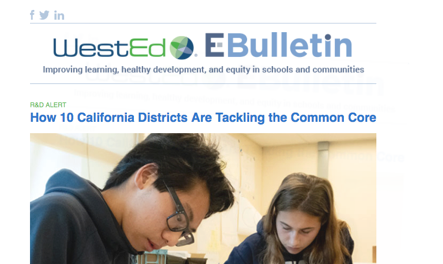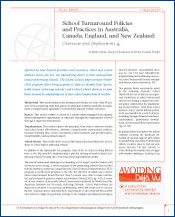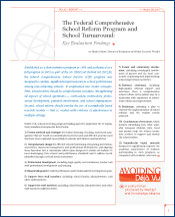Evaluation of the Comprehensive School Reform Program Implementation and Outcomes: Fifth-Year Report
Description
Begun as a demonstration project in 1998 and subsequently authorized as a full program under the No Child Left Behind Act of 2001, the U.S. Department of Education’s Comprehensive School Reform (CSR) program directed grant funds, through states, to qualifying high-poverty, low-achieving schools. The aim was to help these schools increase the pace and effectiveness of their reform efforts. To qualify for a CSR grant, schools agreed to address 11 CSR components, or requirements. Chief among the requirements was that schools employ a scientifically proven school improvement model shown to have been effective in multiple settings.
While nearly 7,000 schools received CSR grants between 1998 and 2006, as documented in this final report of a five-year study of CSR program implementation and student outcomes, just a third of the grantees followed through in using a scientifically based reform model. In fact, as a group, CSR schools were no more likely than comparable non-CSR schools to have implemented the CSR components. Nor did CSR-funded schools demonstrate larger achievement growth than their comparison schools.
The report includes recommendations for federal policy and for additional research.
Resource Details
Product Information
Copyright: 2010Format: PDF
Pages: 212
Publisher: U.S. Department of Education
Available Previews
Stay Connected
Subscribe to the E-Bulletin and receive regular updates on research, free resources, solutions, and job postings from WestEd.
Your download will be available after you subscribe, or choose no thanks.







